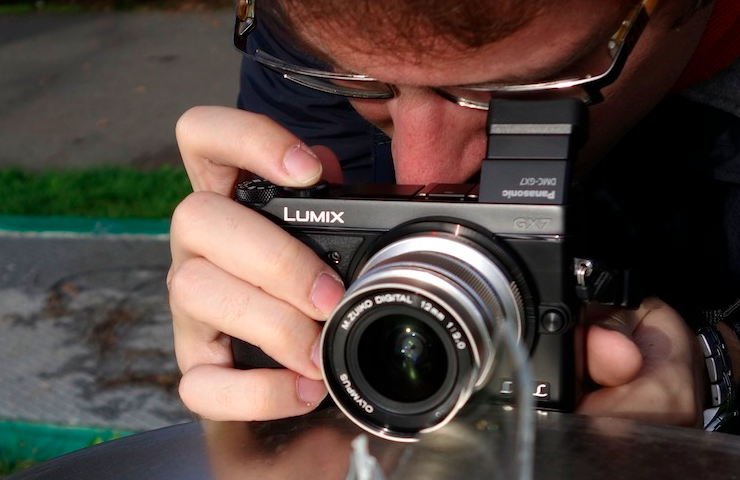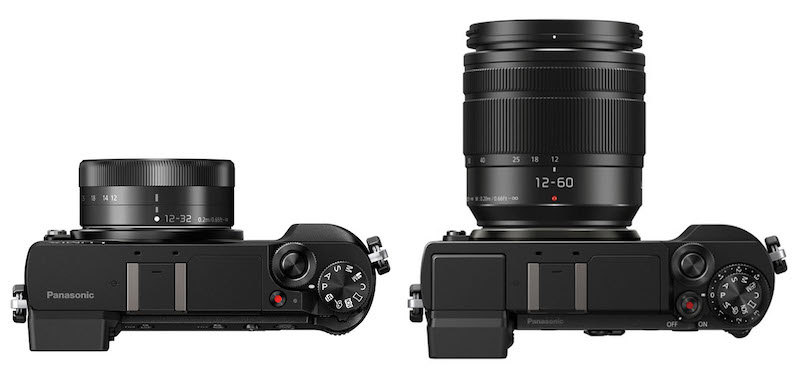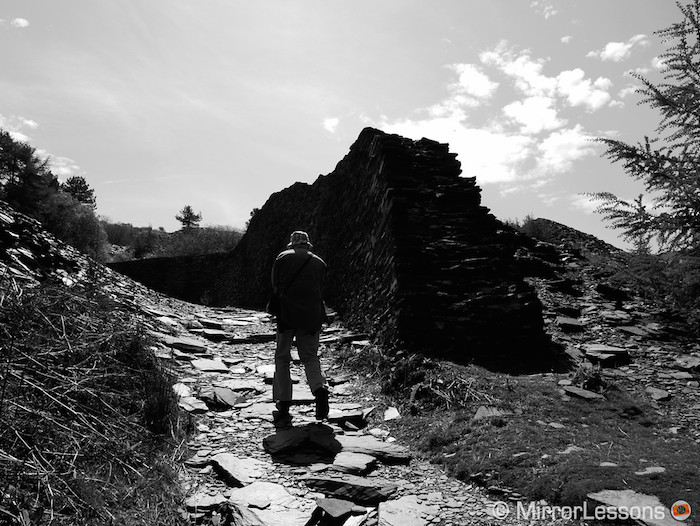The Panasonic Lumix GX9 is the latest edition to the Lumix GX range of cameras. Officially speaking it is the direct successor of the Lumix GX8 but in reality, it has much more in common with the mid-range Lumix GX85/GX80 which was released in mid-2016.
In the following comparison preview, we’re going to be running through all the main differences that set the GX85 and GX9 apart. Let’s begin!
What the two cameras have in common:
- Depth from Defocus contrast detection AF system with 49 areas (first generation)
- 4K video at 30fps / Full HD at 60fps
- 4K Photo mode at 30fps (including 4K Live Cropping, Post Focus and Focus Stacking)
- 5-axis Dual I.S. image stabilisation (first generation, 4 stops of compensation by CIPA standards)
- Extra features like bracketing, panorama, stop-motion animation, multiple exposure, time lapse
- Built-in pop-up flash and hot shoe
- Shutter unit with electromagnetic drive to reduce shutter shock
- Electronic shutter (up to 1/16000s)
- Focus and Exposure bracketing
Ethics statement: The information supplied in this article is based upon official specifications and our personal experience with Panasonic Lumix cameras. We were not asked to write anything about these cameras, nor were we provided with any sort of compensation. Within the article, there are affiliate links. If you decided to buy something after clicking the link, we will receive a small commission. To know more about our ethics, you can visit our full disclosure page. Thank you!
1. Sensor
Up until recently, the 20.3MP Micro Four Thirds sensor was reserved for high-end models such as the GH5 and G9.
The GX9 isn’t the first GX camera to house this sensor – that title goes to the Lumix GX8 – but it is the first mid-range model.
This can only suggest that the 16MP Micro Four Thirds sensor used on the GX85 is reaching the end of its lifespan. If we do see it used again, it will likely be on an entry-level model.
Neither sensor has a low-pass filter, allowing them both to resolve more detail than a sensor that incorporates one.
Like the flagship G9, the JPG engine has been improved to provide truer colour reproduction, particularly for skies and human skin.
2. Fixed vs. tiltable EVF
The tiltable EVF was a feature we loved on the GX7 and GX8, so we when Panasonic gave the GX85 a fixed EVF, we couldn’t help but feel a little disappointed.

Happily, it has made a triumphant return to the GX9. You can either leave it locked in place or tilt it up 80 degrees to help you shoot subjects below eye-level.
To save battery power, the GX9 also includes a new feature which makes it automatically enter sleep mode after detecting prolonged inactivity of the viewfinder’s eye sensor.
All other characteristics remain more or less the same: a field sequential* LCD panel with an equivalent resolution of 2760K dots, 0.70x magnification, and an eye point of 17.5mm.
*Field sequential means that each dot on the screen displays Red, Green and Blue pixels one after the other. This solution should provide better colour accuracy in comparison to a standard LCD panel but it can also produce a rainbow effect in certain conditions (e.g. fast panning).
3. LCD screen
A smaller difference concerns the rear LCD screens of the two cameras.
While both have a 3-inch LCD monitor with touch sensitivity and an aspect ratio of 3:2, that of the GX9 offers a slightly higher resolution (1240K versus 1040K dots).
What’s more, the new Live View Boost mode allows you to check your composition on screen even in total darkness by boosting the sensitivity. This should prove useful for astro-photography for example.
4. Body design
Physically speaking, the GX85 and GX9 are almost identical, so we have to dig a little deeper below the surface to find the differences.
First we have the small difference in size: the GX85 is 122 x 70.6 x 43.9 mm while the GX9 is 124 x 72.1 x 46.8 mm, so 2mm wider and taller, and almost 3mm deeper. The new camera is also slightly heavier at 450g with the battery and SD card. (The GX85 weights 426g.)

The GX9 has an exposure compensation dial which sits directly underneath the mode dial. With a range of ±3EV, it doesn’t offer as much leeway as adjusting exposure within the menu (±5EV) but we appreciate the physical dial nonetheless. This feature was given to the GX8 but wasn’t carried over to the GX85.
According to Photo by Richard, the exposure compensation dial works in manual mode with Auto ISO turned on.

Then there is the video record button which is now nestled inside the on/off button. Because it is raised, it is now easier to press than the recessed video record button of the GX85.
Another feature that skipped the GX85 is the focus lever on the rear. It enables users to change between AFS/AFC/MF without entering the menu. It was very handy on the GX8 (and the GX7 as well), so it’s nice to see it make a return on the GX9.
Finally, the door for the HDMI/USB port has a more intelligent design on the GX9, which is great because I always found the door of the GX85 a bit fiddly to open and close.
5. Sequence Composition mode
Sequence Composition is a brand new 4K Photo mode that is currently exclusive to the GX9.
It allows you to select a series of images from a 4K Photo movie clip and instruct the camera to combine them into one composited image, all in-camera.
In order to avoid artefacts, you’ll need to mount the camera on a tripod and choose to combine frames without subjects that overlap.
If this new mode has piqued your curiosity, you can find an excellent explanation with sample images on the Imaging Resource website.
6. Bluetooth Low Energy (BLE)
The GX9 is one of the latest cameras to incorporate a Bluetooth Low Energy (BLE) connection.
The benefit of this technology compared to standard WiFi is that it enables a constant connection with a smartphone/tablet with minimum power consumption. You can activate the camera by simply using a smart device and you can also geotag your images automatically.
The GX85 lacks Bluetooth but does benefit from WiFi and NFC. With any of these methods, you can shoot, browse and share images remotely as long as the Panasonic Image App is installed on your smart device.
7. L Monochrome D Profile
In addition to the basic L Monochrome profile found on the GX85, the GX9 also boasts the new L Monochrome D profile designed especially for street photographers. According to Panasonic, it gives black and white images a more organic, film-like appearance and you can add three levels of grain.
Below is an example of the L Monochrome profile from the GX85. It will certainly be interesting to see how the new profile compares!

8. White balance
Another subtle difference concerns the white balance algorithm of the two cameras.
Whereas the GX85 comes with the basic auto white balance option (AWB), the GX9 has an additional custom auto white balance setting (AWBc).
By choosing this setting, reddish tones are suppressed to reproduce the original colours of the subject more accurately. However the same tones as AWB may be applied in bright environments.
9. Continuous shooting and buffer depth
The GX9 is ever so slightly faster when it comes to continuous burst shooting, reaching speeds in High mode of up to 9fps as opposed to 8fps on the GX85.
In Mid and Low mode, both shoot at a maximum of 6fps and 2fps respectively. Live View is only available up to 6fps.
In addition to being a little faster, the specifications also suggest that GX9 has a better buffer when shooting in RAW format – 30 images in a burst up from 13 on the GX85. (In the field, we’ve actually found the GX85 capable of firing off longer bursts than this, so we can probably expect the same from the GX9 as well.)
10. Additional accessories
Because the GX9 is technically the successor of the rather hefty GX8, but is more or less the same size as the diminutive GX85, Panasonic opted to design a special hand grip (DMW-HGR2) for the new camera to be used when telephoto or large-diameter lenses are mounted.
Another new accessory is the DMW-EC5 eye cup that makes using the EVF more comfortable.
Finally a special series of DMW camera bags has been designed for the GX9.
These additional accessories are all sold separately from the camera body.
Conclusion
If you already own the Lumix GX85 and are considering upgrading to the GX9, there are but three things worth considering.
The first is of course the sensor resolution, though to be frank, the difference between 20MP and 16MP isn’t as significant as you might think.
The second, perhaps more relevant difference is the tilting EVF. Personally speaking, I really enjoyed using it on the GX7 and was sad to see it go on the GX85, but now that I own the latter, I’d be reluctant to upgrade again just for that.
Finally, there is the fact that in the US, you currently have no choice but to buy the GX85 and GX9 with the kit lens. Bundled with the 12-60mm f/3.5-5.6 OIS, the GX9 costs just shy of $1000 whereas the GX85 with the 12-32mm f/3.5-5.6 is approximately $600. Of course, this may change in the future, so it’s worth keeping an eye on the various bundles that come out.
Check price of the Lumix GX9 on
Check price of the Lumix GX85 on
Amazon | Amazon UK | B&H Photo | eBay
You might also enjoy the following articles:
